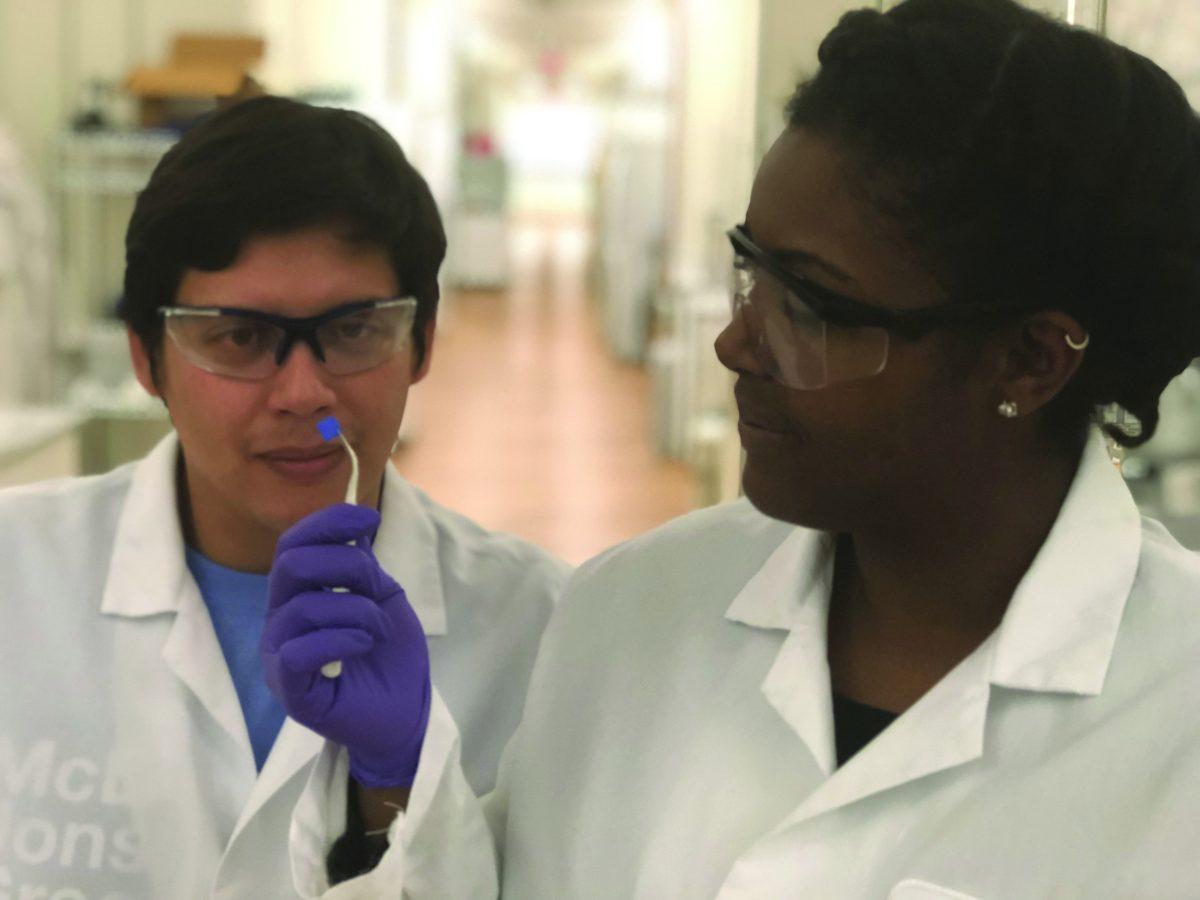Group produces 3D-printed microneedle patches as cheaper, more efficient alternative to traditional methods
A joint research team from UTD’s Gassensmith and Smaldone labs are using 3D printing to streamline drug delivery systems, making the process of receiving medications such as vaccines less painful.
The team is achieving their goal through the development of a 3D printed microneedle. Principal investigator Jeremiah Gassensmith said the dissolvable nature of the needles makes them ideal for delivering drugs in a way that limits medical waste and cuts the cost of treatment.
“Microneedles are very small drug delivery vehicles. They’re like needles except they’re too small to inflict any pain. This is born out of the idea that nobody likes to get injections,” Gassensmith said. “It’s essentially a way to introduce drugs into the body without introducing any pain.”
The lab was able to find a way to print microneedles using commercially available printers, he said. Gassensmith added that one of the challenges with designing the microneedle was printing it in a way that would make the needle small and sharp enough not to cause pain.
“The 3D printer you buy off the shelf has too low of a resolution to produce a painless needle. If you were to push them into the skin, they would hurt,” Gassensmith said.
Michael Luzuriaga, a chemistry Ph.D. student who served as the leader of the project, developed a technique to sharpen the needles by dissolving parts of it in a basic solution.
“Michael’s idea was that the plastic the needles are made of can be etched and is dissolvable in the tissue, but that process can be sped up by putting it into a really basic solution,” Gassensmith said. “He had a technique where he dissolved it a little and then flipped it over and dissolved it a little more so you get a really sharp tip. Ultimately, a big part of the innovation was creating this sharp tip from the chemical etching.”
3D printing microneedles provides a faster and more cost-effective method to create prototypes, Luzuriaga said.
“This is a great way to make different types of prototypes of microneedles. With molds, you’d need to make the mold first and then make the microneedle,” he said. “It’s cheaper: it’s only a thousand dollars for one 3D printer and you can print 40 microneedles in one hour. It’s a pretty great system I think.”
Microneedles are not a new product, said Luzuriaga said, however this is the first time microneedles have been 3D printed.
“Our goal was to go in there and print one and hopefully have resolution that can be used for therapeutic delivery in the future,” he said.
There are different methods of putting drugs into the microneedles, Luzuriaga said. These include coating the microneedle in a solution containing the drug, or allowing the material to absorb the drug of interest.
“It’s a polymer, so with different solvents you can expand the network and that allows you to diffuse small molecules into the network,” Luzuriaga said. “Once you dry out the solvent the network closes up again, confining the drug of interest into the polymer interior.”
Gassensmith said 3D printable microneedles will be able to change the way patients receive healthcare.
“A person can get these and slap them on their skin and actually administer it themselves and be on their way, essentially cutting out a lot of medical waste, scary needles and interactions with strangers that people might find uncomfortable,” Gassensmith said. “Particularly in developing countries where there’s some skepticism about vaccines and foreign health care workers coming in and administering them.”











